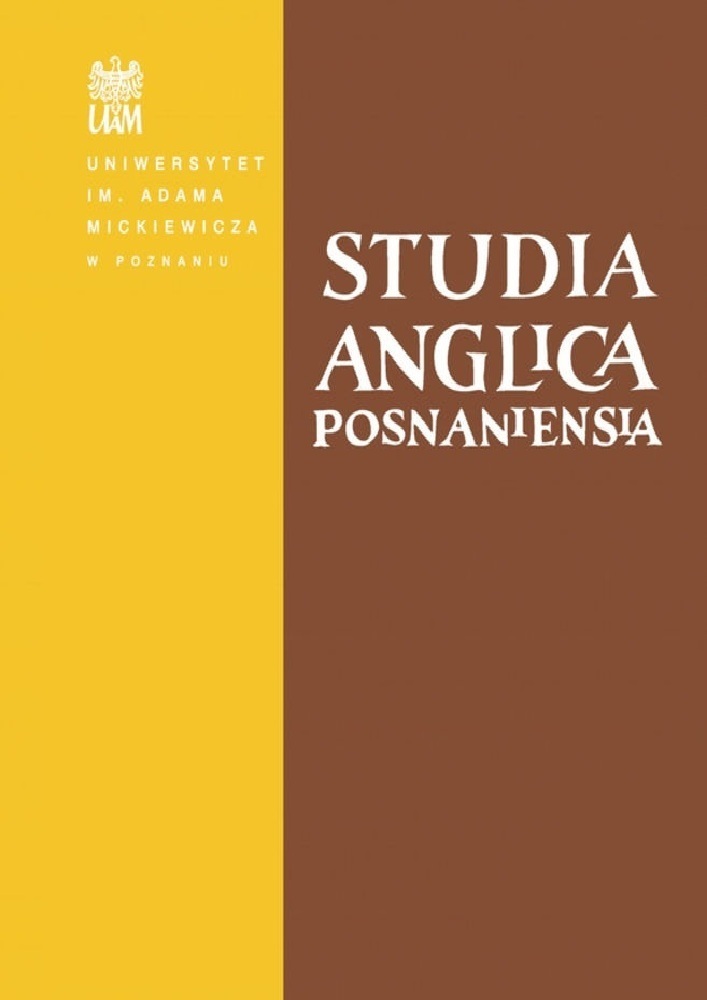Abstract
Fourteenth century England experienced social changes which influenced the attitude to crown law and triggered a growing distrust to law and its representatives. The progressing development of the gentry complicated the defining of offences, and diversified the means of punishing them. The Tale of Gamelyn presents a conflict between two brothers, sons of a knight, which went beyond the confinements of the household, transforming itself into a conflict between law and justice. Their feud is a cross-complaint concerning land, which soon turns into a spiral of violence in which one brother uses law to control and punish, and the other uses crime and violence to achieve justice. Using Donald Black’s theory of the sociological geometry of violence (2004) and of crime as social control (1983), this article will analyze the law in the tale as a tool of social control represented by Johan, and justice acquired with the use of self-help by Gamelyn. The article will attempt to prove that the story presents a complex relation between justice and law pinned across the varied spectrum of social classes, which Gamelyn changes a number of times, and will argue that the tale is an affirmation of violence as an underlying force of both law and justice, differing in presentation and realization according to social class.
References
Black, Donald. 1983. Crime as social control. American Sociological Review 48(1). 34-45.
Black, Donald. 2004. Violent structures. In Margaret A. Zahn, Henry H. Brownstein, and Shelly L. Jackson (eds.), Violence: From theory to research, 145-158. New York: Matthew Bender.
Bradbury, Nancy Mason. 2012. Gamelyn. In Neil Cartlige (ed.), Heroes and anti-heroes in medieval romance. 129-144. Cambridge: D.S. Brewer.
Cartlige, Neil (ed.). 2012. Heroes and anti-heroes in medieval romance. Cambridge: D.S. Brewer.
Field, Rosalind. 1999. Tradition and transformation in medieval romance. Cambridge: D.S. Brewer.
Fleming, Peter. 2005. Politics. In Raluca Radulescu and Alison Truelove (eds.), Gentry culture in late medieval England, 50-62. Manchester: Manchester University Press.
Green, Richard Firth. 2002 [1999]. A crisis of truth. Literature and law in Richardian England. Philadelphia: University of Pennsylvania Press.
Gorski, Richard. 2003. The fourteenth century sheriff: English local administration in the Late Middle Ages. Woodbridge: The Boydell Press.
Hanawalt, Barbara. 1998. Of good and ill repute: Gender and social control in medieval England. New York: Oxford University Press.
Hanawalt, Barbara and David Wallace (eds.). 1999. Medieval crime and social control. Minneapolis: University of Minnesota Press.
Hanawalt, Barbara and David Wallace. 1999. Introduction. In Barbara Hanawalt and David Wallace (eds.), Medieval crime and social control, ix-xvi. Minneapolis: University of Minnesota Press.
Iersel, Geert van. 2007. The twenty ploughs of Sir John: The tale of Gamelyn and the implications of Acreage. In Thea Summerfield and Keith Busby (eds.), 111-122. People and texts: Relationships in medieval literature. Amsterdam: Rodopi.
Jensen, Gary F. 2003. Social control theories. In Richard A. Wright and J. Mitchell Miller (eds.), Encyclopedia of criminology. New York: Routledge. http://sitemason.vanderbilt.edu/files/l/l3Bguk/soccon.pdf (date of access 10 Oct 2012).
Keen, Maurice Hugh. 1987. The outlaws of medieval legend. London: Routledge.
Knight, Stephen and Thomas H. Ohlgren (eds.). 1997. The tale of Gamelyn: Introduction. Originally published in: Robin Hood and other outlaw tales. Kalamazoo, Michigan: Medieval Institute Publications. TEAMS edition: http://www.lib.rochester.edu/camelot/gamint.htm.
Meale, Carol M. (ed.). 1994. Readings in medieval English romance. Cambridge: D.S. Brewer.
Menuge, Noel James. 2001. Medieval English wardship in romance and law. Cambridge: D.S. Brewer.
Putter, Ad and Jane Gilbert (eds.). 2000. The spirit of English medieval popular romance. Harlow: Longman.
Mercer, Malcolm. 2010. The Medieval gentry: Power, leadership and choice during the Wars of the Roses. London: Continuum.
Radulescu, Raluca and Alison Truelove (eds.). 2005. Gentry culture in Late Medieval England. Manchester: Manchester University Press.
Rollison, David. 2010. A Commonwealth of the people: Popular politics and England’s Long Social Revolution 1066-1649. New York: Cambridge University Press.
Scattergood, John. 1994. The tale of Gamelyn: The noble robber as provincial hero. In Carol M. Meale (ed.), Readings in medieval English romance, 159-194. Cambridge: D.S. Brewer.
Shippey, T.A. 2000. The tale of Gamelyn: Class warfare and the embarrassments of genre. In Ad Putter and Jane Gilbert (eds.), The spirit of English medieval popular romance, 78-96. Harlow: Longman.
Singman, Jeffrey L. 1998. Robin Hood: The shaping of a legend. Westport: Greenwood Press.
Summerfield, Thea and Keith Busby (eds.). 2007. People and texts: relationships in medieval literature. Amsterdam: Rodopi.
Wright, Richard A. and J. Mitchell Miller (eds.). 2003. Encyclopedia of criminology. New York: Routledge.
Zahn, Margaret A., Henry H. Brownstein and Shelly L. Jackson (eds.). 2004. Violence: From theory to research. Amsterdam: Elsevier.
